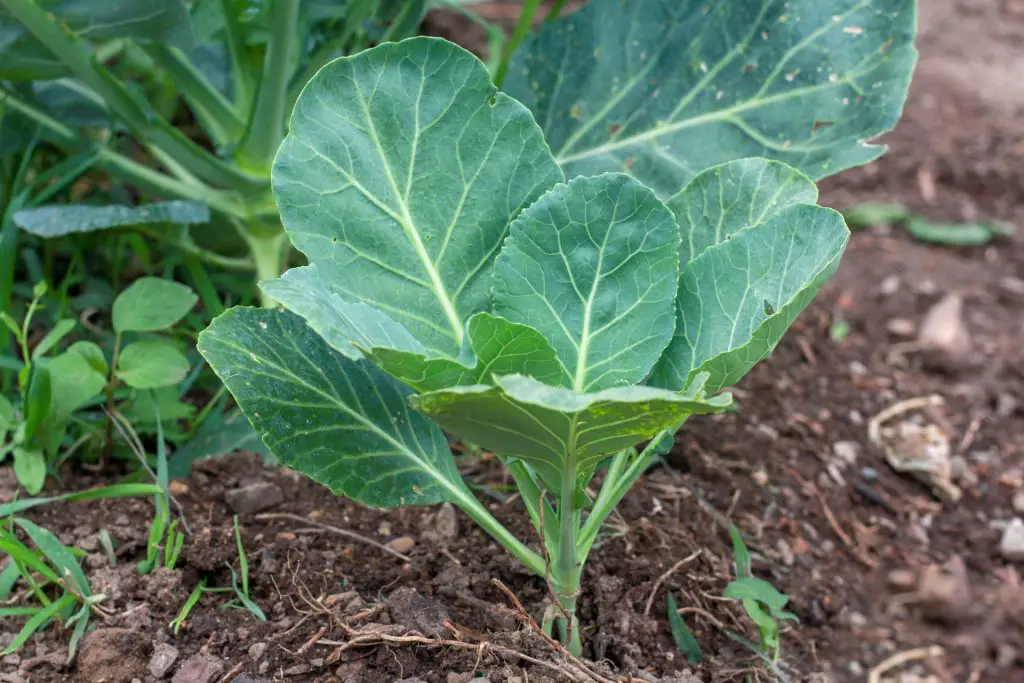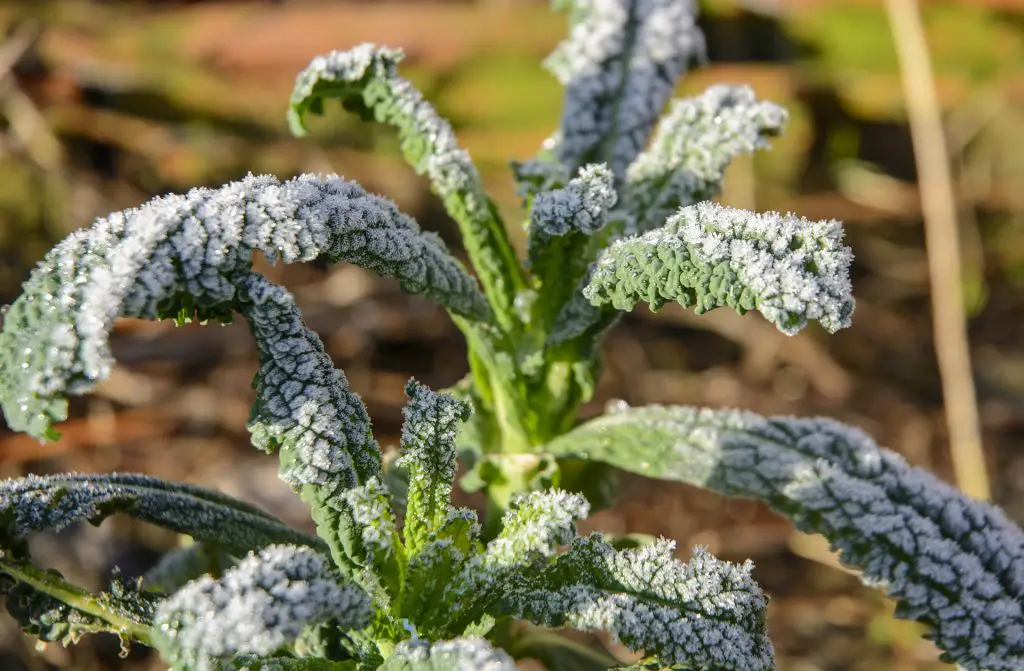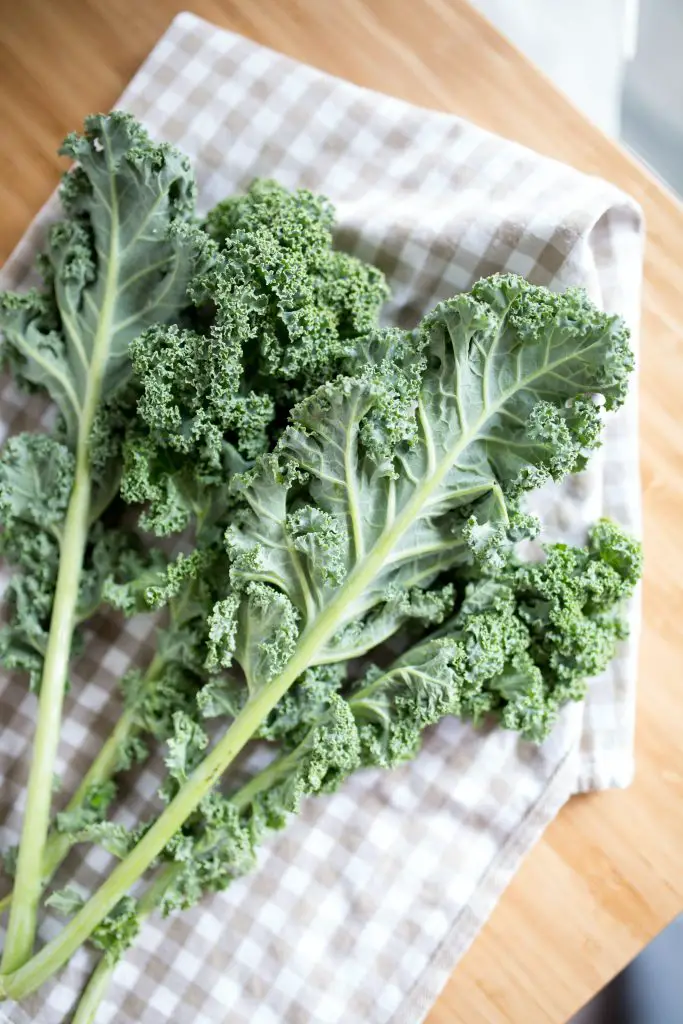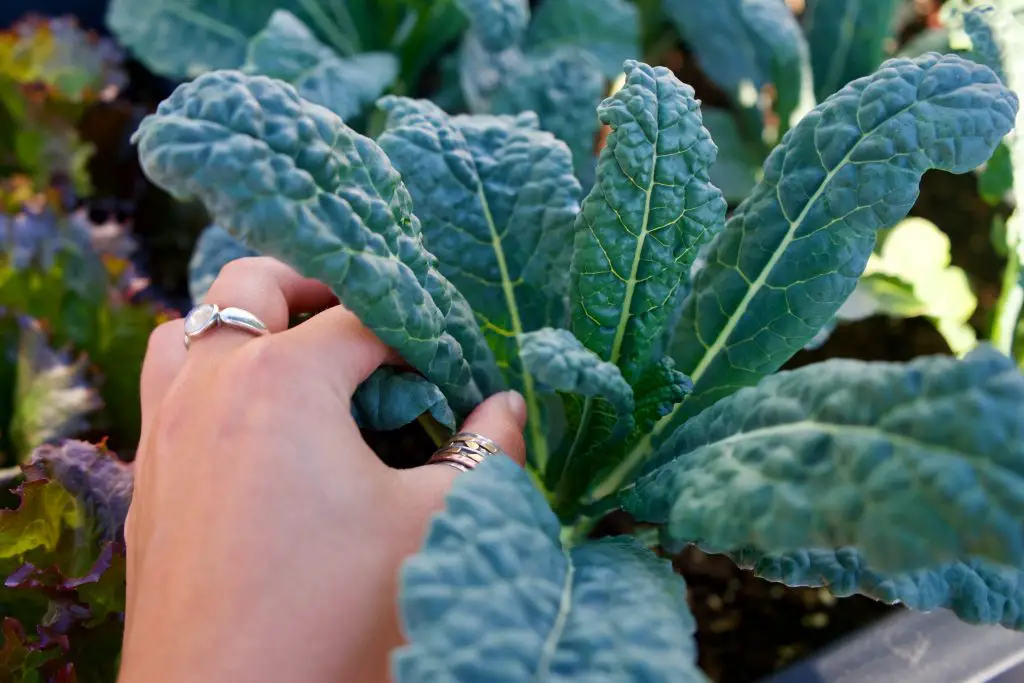Collard Greens Vs Kale. Kale and collard greens are both widely used leafy green vegetables that are popular in places like in Europe. They are often treated as interchangeable in many recipes but are they the same thing and how do you tell them apart?
Collard Greens and Kale are actually separate cultivars from the same species, Brassica oleracea. The most distinctive difference is that Collard greens generally have a smooth leaf that is similar to those found on cabbages, whereas most forms of kale have curly leaves that are relatively thin in most cases.
Collard greens can be largely thought of as an open-headed cabbage that has a relatively low growing habit compared to most varieties of kale which progressively increase in height throughout the season. The picture below shows what a typical collard plant looks like.

The leaves of the collard greens tend to be relatively leathery compared to the most common variety of kale, Tuscan kale which is shown in the picture below. However, there is quite a degree of variation associated with the different varieties of kale that are available with varieties such as Russian kale tending to have a much tougher leaf.

Is There A Benefit To Eating Kale Over Collard Greens?
Kale is routinely touted as a superfood, but is there really much difference between it and collard greens, particularly given that they are actually the same species?
From a general perspective eating Kale or Collard greens can be considered a very healthy option according to soupersage.com. Kale and collard greens contain similarly low amounts of calories of around 35 calories per 100 grams. Additionally, protein and carbohydrate levels of Kale and collard greens are also similar at around 3% and 5% respectively, which means they are ideally suited to diabetics.
However, where kale is superior to collard greens is it has Vitamin C, Iron, and antioxidant levels which are all substantially higher. Vitamin C is important in sustaining a healthy immune system, while Iron is an important element of hemoglobin which, helps to transport oxygen within the blood. Antioxidants are a well-known anti-cancer agent, so overall Kale is a little better for you.
Is It Worth Growing Your Own Kale and Collard Greens
Kale and Collard Greens are two plants that are definitely worth growing. The reason for this is that they are one of the easiest crops to grow and they will save you the most money. They produce a prolific crop whose harvest can be extended year-round in most climates.
The plants themselves are relatively are low maintenance, and will take relatively little space to produce. They can also be grown successfully in container pots which make growing them accessible to almost anyone.
The other significant benefit is the quality of crops that can be produced. This is simply due to the freshness of the leaves which increases the nutrient value of the crop as some vitamins, such as vitamin C degrade readily as the leaves age.

How To Grow Kale And Collard Greens
As both Kale and Collard greens are the same species they require similar conditions to grow. Both plants are hardy plants that can tolerate frosts and generally perform well in the cool months of the year. Many gardeners plant them in spring to late summer which enables a crop to be taken over an extended period of time.
As both plants are biannual, they grow and develop in the first year before flowering and setting seed in the second year. The flowering typically occurs in the spring of the second year as the weather warms up. To optimize the production of the plants it is best to ensure that the seeds are planted in late summer at the latest when the weather is still warm.
Sowing the seeds at this stage ensures that the plants will reach a reasonable size before the cooler weather arrives which will allow a harvest to be taken throughout the winter.
How To Plant Seeds
Seeds can be planted directly in the garden and they will germinate successfully, however, I recommend planting them in seed trays as it is easier to control the climatic conditions. Additionally, sowing seeds in trays reduces to period that the plants spend in the garden which allows other vegetables to be grown.
When sowing seeds in a tray they should be planted into seed raising mix at a depth of 0.5 inches (1 cm). In each cell, it is recommended that you plant 2 seeds to ensure that that least one plant comes up. Once planted the seedlings will emerge 7 to 14 days later, if both seedlings have germinated in the cell remove the weakest seedling.
Once the seedlings have germinated it is important to ensure that the soil remains moist. The seedlings will typically need to spend 4 to 6 weeks in the seed trays before they are large enough to plant outside. At this stage, the plants should of reached a height of 4 to 6 inches.

Planting Seedlings Into The Garden
Collard Green and Kale seedlings should be planted outside in a sunny location approximately 1.5 to 2 ft apart (45 to 60 cm), however, the plants will also tolerate partial shade. In terms of soil conditions the plants ideally prefer a rich moist but free-draining soil that is slightly acidic.
When planting them it is advisable to cover the soil with mulch to help retain moisture. Additionally, it is also recommended that snail pallets be sprinkled around the plants as they are susceptible to attack from slugs and snails when they are young.
On Going Maintenance And Harvesting Plants
In terms of ongoing maintenance, these plants require very little effort apart from ensuring that the beds remain weed free and the plants are watered regularly throughout the growing season.
However, if you live in a region that has cool winters it may be necessary to provide some winter protection to the plants. While Kale plants, in particular, are hardy and can survive temperatures as low are 0°F (-18°C) it is worth providing protection to ensure that the quality of leaves that can be harvested is reasonable quality.
The simplest way to do this is to use a row cover, however, as kale is relatively tall the row covers need to be tall enough to accommodate the plants and strong enough to resist high winds. The product we recommend is the Growsun Garden Tunnel Plant Cover because it is relatively tall and has hoops that can be anchored deeply into the ground which allows it to resist wind. The product is shown in the image below.

In terms of harvesting, both kale and collard greens can be harvested at any stage once the leaves are sufficiently large. This usually occurs when they are around a foot tall (30 cm). At this stage, it is advisable to strip off the outer leaves in the case of the collard green and the lower leaves in the cans of the kale plant. This will leave the plant with young leaves that can be harvested later on.
